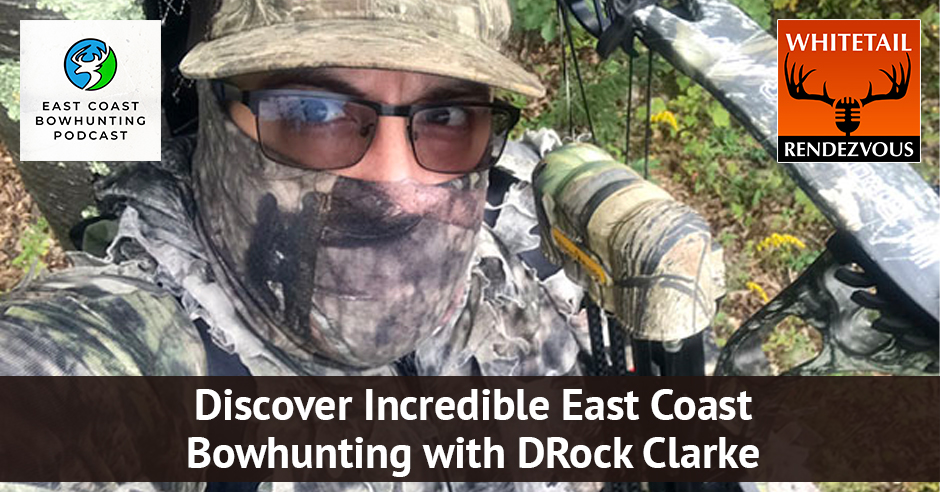
—
Listen to the podcast here:
Discover Incredible East Coast Bowhunting with DRock Clarke
We’re heading out to the East Coast with DRock Clarke. He is Mr. East Coast Bowhunter. DRock, welcome to the show.
Thanks for having me. I’m glad to be on, Bruce.
I’m excited because you are killing it. You’ve got a great podcast and you have some super guests. I’m glad we can kick back and talk shop between two podcasters.
I’m looking forward to it myself. I’m humbled that you reached out to come on the show. First and foremost, Happy 49th Anniversary. That’s a milestone not everyone gets to see. I hope one day I get to do the same.
My wife’s a saint, that’s what I’ll say. It was probably my biggest post yet on Instagram. I’ve had hundreds of people say, “Props and congrats,” and all that. I’ve got quite a wife because she’s allowed me to live my passion, which is hunting and fishing for many years. I’m a blessed man.
Those are hard to find. God bless to you.
Practice is everything. If you practice enough, it becomes an all-natural reaction and you’re thinking less and doing more. Share on XLet’s start with you. Give me the backstory of East Coast Bowhunting. Why did you guys crank it up?
I’ve been low key off the grid a little bit and really putting foundation so once we came to light, it would be something to be said and not just another podcast trying to come out. Not that I discourage anyone from doing so but I wanted a good foundation. I want to shout out my cohost, EastCoast Trev. He’s a hard worker and a fisherman. He couldn’t make it. Hopefully, down the road maybe you could have him on an episode. Basically, where it started from, I was building that foundation and I had enough backing to start making my face known and my name be known. My first experience was at Working Class Bowhunter. Shout out to Curt Geier and the boys out there in Midwest. He’s actually our title sponsor. It’s the first podcast to sponsor another podcast. He’s definitely my best friend and he’s been a big help for the startup of things.
Once I have figured I had enough foundation, I scouted Connecticut for people this time, not whitetail, to get the right representatives out of the East Coast to join the podcast. I bumped into EastCoast Trev at a New England show. He had a booth with CT Bowhunting at the time. We’re going back not that long ago. We started the podcast in September 2018. A few months prior to the show, it was February 2018, I ran into Trev. I was like, “You guys should start a podcast.” He had a great foundation and great following to represent not just Connecticut but the whole East Coast. One thing led to another and we’re not even a year in and our episodes feature Sue Aikens from Life Below Zero on Nat Geo. It’s been trucking along pretty quickly.
Let’s talk about your hunting backstory. Where did your hunting tradition come from?
The only American out of my Mexican family, all my siblings and my mother were born in Mexico. My father was born in New York but he went to school down in Mexico. My family’s pretty well set off. My grandfather would always take me out to his ranches and we’d go hunt there. He showed me the stick and string and how to shoot as a young lad. I was born in West Des Moines, Iowa. When I was about three years old, we moved back to Mexico and that’s when I started hunting.
What part?
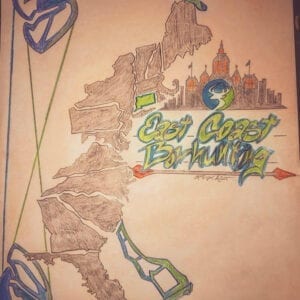
Monterey.
Is that on the Pacific or is that on the Gulf or the Caribbean?
It’s somewhat Central East Mexico, the north part about three hours south of El Paso, Texas. I started hunting there and my father is a marine biologist and computer engineer. He was not a hunter, definitely not into power sports. I’m everything he wasn’t. He played ball a little bit but I was the football star. I played for Syracuse for a little bit. I wanted to outdo him because he was always highly sought-after. He was always busy. All his buddies would ask him questions, he would always have the answers. I always looked up to him but always want to show him that I can be better than him. The competitive nature between father and son.
When your grandfather took you out, what did you hunt? Javelina or mule deer?
Never deer. Never big game, it was mainly rabbits, grouse and random smaller critters. Never got a chance to shoot a turkey, which that’s going to be a bucket list of mine. I moved to Louisiana right after Syracuse. I lived on Fort Polk with my brother was on base. He was in the service for the Army. I would frequent the swamps down there and I bowhunted gator a lot down there. That was a fun task and definitely a learning curve because I messed up a lot.
I have never done it and I don’t know if I would.
If you don’t mind mosquitoes, then I would highly recommend it.
How did you get up to Connecticut where you are now?
I went to school in Connecticut, all through elementary school and high school. Our family moved back from Mexico to Connecticut. My father wanted to have his own business. He was always an entrepreneur, wanting to work for himself. My family in Mexico was well set off and we had it made down there. To move from there and then come back to America and start from scratch, I was upset at first but then all the friends that I was making right away, it made it worthwhile. I grew up in Naugatuck, Connecticut and it’s about as country as you could get for Connecticut like Coventry. EastCoast Trev and my other cohost, Ryan, they’re a bunch of hillbillies out there too from Connecticut.
Are you talking about Coventry, Rhode Island?
Coventry, Connecticut. It’s about no more than an hour drive from Rhode Island, maybe even shorter.
I was born in Providence and lived in Foster Center, right on the Connecticut border and that’s where I started hunting when I was ten years old.
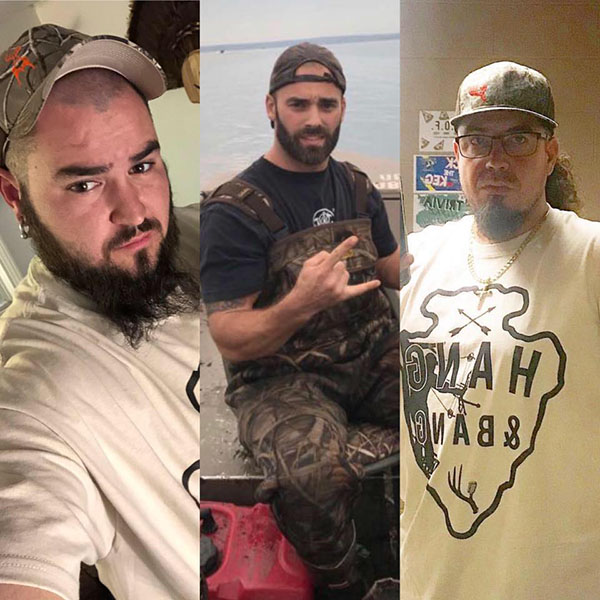
Did you hunt some big whitetail back then too?
I shot grouse, cork trout, raccoons and rabbits but very few deer. You’ve got to think back in the ‘50s. There weren’t a lot of deer on Rhode Island. I saw some but I was way too young to hunt.
Rhode Island is booming for whitetail. I don’t want to give all the hotspots but New England has a lot of sleeper states. We keep it on the hush out here because everyone’s focused on Midwest. Everyone’s going out to Midwest.
My uncle had a little farm down in Coventry, Rhode Island and my cousin still lives there. Maybe I should call him.
You should if you’re trying to get at it again.
They’ve got a couple of hundred acres.
Hunting is like gambling. You put yourself in the best position for the best odds, and you hope for the best. Share on XOne of my buddies out in Rhode Island won the National Whitetail Championship out of his sector out of Rhode Island.
The first whitetail I ever saw shot was when I was a little kid. A buck came out on the ridge and we were doing something in the yard. My uncle was a farmer and he said, “Go get my 45-70.” I went, got it and took it to him.
Definitely venture out there if you get the chance, that will be good for sure.
You never know what you’re going to find out on podcasts. The hunting tradition came and it started with your grandfather, then you hung out in Connecticut. Did you hunt in high school or when did you start hunting whitetails?
Not proud of this but like many young folks, we’d go out and shoot our bow and learn more on squirrels and stuff. Connecticut is pretty tough. You have to wait until you’re twelve years old to be licensed to hunt. That was the bigger deterrent for me. It didn’t stop me from shooting stuff when I was younger. I was all self-taught, mainly my friends and me and mainly focused on critters environment, which was a ton of squirrel and a ton of rabbit. Once I was of age, I started hitting up the turkey and focused on that mainly, pick that up all through into high school. Never even dawned on me to go into whitetail game only because I was focused on football and that was my dream at the time, mixed with power motorsports. I was always on two wheels, if not a quad. That was my upbringing but I always loved to shoot and we would always shoot for fun.
As far as hunting, turkey is the biggest I’ve ever got. Going back after college, I moved down to Louisiana with my brother and that’s when I started venturing more into hunting because reality smacked me in the face and I blew out my knee. Football was done. I went back to what I was good at, which was fixing cars and got back to my hunting roots. Down there was nothing but turkey and gator. It never even dawned on me to hit up the whitetail. It started in 2017 here in Connecticut. My buddy, Jay, he got me onto it. Unfortunately, I say this out of respect, there’s nothing wrong with it. My first whitetail down was with a crossbow. I wanted it to be with stick and string but I was in a car accident that I couldn’t draw on a bow. It was actually opening day. I took down a doe with a crossbow and I called it luck because my very first season hunting whitetail, I got six down. I was hooked on it.
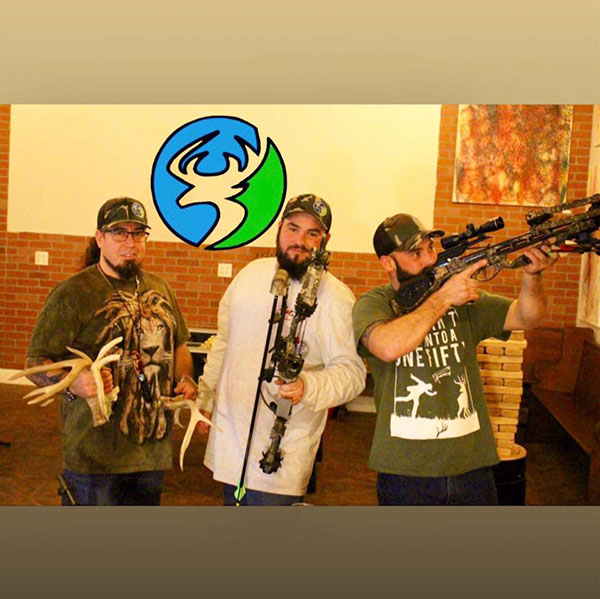
Were you hunting private land or public land?
This was public land when I first started. I became obsessed because my buddy, Jay, opened me up to the whitetail world. I’m one of those competitive dudes that I don’t want to be just an average at whatever I do. I want to be one of the better at what I do. Everything I’ve read and everything that I was listening to, that’s when I discovered podcasts. There weren’t too many hunting podcasts at that time. In 2016, I was prepping myself for it going into the 2017 season and that’s when I found Working Class Bowhunter, which is our title sponsor for EastCoast Bowhunting Podcast.
Everything that I was gathering, all soaking it in like a sponge. All different podcasts, The Hunting Beast, Deer Hunter Podcast and all that I could reach out to. I was listening to them to gain a different perspective and different knowledge. Reading every magazine, every article that I could get my hands on and I was hooked. It was a big rabbit hole. I did my homework during turkey season of 2017 and really focused my vision on deer but slayed birds at the same time. It was all public land at first. I set myself up to the high traffic area and I told myself I’m not going to wait for a big buck or trophy buck. My mentality when I first got to do it is if it’s brown, it’s down. As long as it didn’t have spots, I need to learn how to kill deer in order to know how to kill deer. That was my mentality going in. In the opening day, we camped out the night before and we did some scouting on the trail cams that I had set up and got fortunate enough. I took down a doe on opening day with a crossbow.
Were you out on grind or hang on?
A climber actually. To this day, I use a climber only. I learned really quickly that you shouldn’t be a cheapskate on climbing or investing in climbers only because I went inexpensive. Bowhunting is a very expensive sport. The climber I had was basic field and stream steel climber. If you’re tracking in five miles in the woods with a steel climber, your backpack and your crossbow, even a light crossbow, seven pounds get heavy after a while. By the time I got to my tree, I was soaking wet, drenched. Luckily, I took enough advice that I went in basically in my skivvies and once I got to the tree, I climbed up and then I layered up once I got up there, which weren’t many layers at that time for opening day. It was pretty hot that day but that was a lesson learned. By the end of the first season, I got my hands on a lone wolf assault climber, which was a night and day difference. Lighter is better if you’re going to be DIY.
If you’ve got a run and gun, either a hang on climber or whatever you’re going to use. You need the lightest and the best that you can buy. Your steps and everything, you’ve got three-foot sections, you get three of those at least, and then you’ve got your climber and you’re sneaking in, setting up and then you may move from the gunning.
Especially if you’re planning to hunt all day, you’re not going to be sitting on the tree all day early season. If you do not see any action come 10:00 or 11:00, it’s time to set up for a new spot. That being said, shout out to my other sponsor, Wild Edge Inc. They’re making big moves. They’re Connecticut-based. I’m going to be hunting out of a saddle as well. Honestly, that is the lightest approach.
It is. I haven’t done it yet.
It is a learning curve but it’s an easy learning curve. It was a lot easier to learn how to use the steps in a saddle than that lone wolf assault. It’s almost like an open shot XOP. They’re basically the same thing. Quite honestly, my first time ever using that, I didn’t know what to do really. I had to go to YouTube and watch a couple of videos and then practice that. Anything good in quality, it’s going to be a learning curve.
There’s no question about it. You’re quite a student. Since you’re new to this, what are some of the things that you’d recommend that they pay most attention to for new hunters as far as archery hunting?
For archery hunting, I’ll definitely start with, “Go shoot your bow.” That’s Working Class Bowhunter’s number one slogan. For a new hunter, if you’re going to go into bowhunting, that’s the number one priority. It doesn’t matter what bow it is, use whatever you get your hands on and make sure it works for you. If you could hit that target every time, it doesn’t matter what bow it is. There are a lot of good bows out there, even older bows. Have no shame in your game. My slogan is, “Twenty shots a day keep the grim reaper at bay.” Twenty shots a day, make sure that you get it in and in this way, once it comes a time, it’s going to be a natural reaction if you don’t get buck fever because even the best get buck fever at times.
If you get an opportunity, invest in quality, do so right off the rip because you’ll save yourself some money off the giddy up versus trying to consolidate and be with inexpensive equipment because you get what you pay for. That slogan didn’t come from anywhere. If you have the opportunity to get solid equipment, jump on it. There’s nothing wrong with buying something used or hand-me-down because the quality is quality. It’s built to last. The practice is everything. If you’re going to be shooting out of a ground blind, practice shooting out of a ground blind. If you’re going to be shooting out of a tree, practice climbing with whatever it is like climbers, sticks or saddle hunting. You need to target shoot offseason using those same methods. This way you visualize yourself doing it and then you go and do it. Practice it and once in a season, it’s an all-natural reaction. Less thinking, more doing.

I know some people have a telephone pole in their yard, twenty-foot-high and then they put their targets out, 10 yards, 20 yards, 30 yards and basically 40 yards because the 40-yard shot in the woods is a long way. You typically don’t get them but when you think about that, then you get the angles down. He wears his clothes that he’s going to hunt with too if it’s an early season, middle season or late season. That way, no matter what season it is or what shot angle it is, he’s comfortable.
The best thing that I learned, me playing football almost half my life, practice shooting without a rangefinder. Your body and mental stability, especially with your vision can incorporate the yardage without that rangefinder because you never know. You might fumble your rangefinder or you might not have time to use it and you have to shoot. This way, you’re all ready and the best way to do that is 3D shooting. If you could get on a 3D course, do it and try to shoot or go through the 3D course without a rangefinder. Most places won’t let you if you’re actually competing. That’s probably the best thing that’s helped me be successful in the past couple of seasons is 3D shooting and not using the rangefinders. When you’re in the woods, you can be sitting in your tree, your ground blind. If there’s no action going on, whip out your rangefinders start ranging in certain points and certain landmarks, “That big oak over there is twenty yards. That mountain-laurel on the back, that’s 30 yards.” If you do see a critter and it catches you off guard, you already know where the yardage is and where to hit.
I call it firing solutions. Some people don’t set up, they don’t get in a tree stand and then figure out, “How many slots can I shoot and how far are they? What’s my furthest distance?” and then have that. If a deer comes between you and that place, you basically know where they’re coming from. I recommend that to people all the time and say, “When you get settled, you get everything set up in the stand, pick out three or four points wherever you think a deer could come through. Make sure you know that yardage and forget about your rangefinder.” The last thing you want to do is fumbling that and you’ve got a buck or doe in front of you that you want to harvest.
You reminded me of my last kill of 2018. It was a three-year-old buck with broken antlers. EastCoast Trev and I, we’ve had him on trail cams, a big bodied buck with a smaller rack. Probably if I had to guess, maybe in the low 120s. If he would have made Pope & Young, I would have been surprised I’ll put it that way. This was a private spot. We went tag team. EastCoast Trev went on top of the ridge and I stayed towards the bottom. We covered both areas this way going in. If one were to push the deer one way or the other, someone else is going to get lucky.
That was my day. I went into the tree, no line set up. It took me maybe ten minutes to set up, climbed up the tree and set up the sign. Before I did that, I actually made a quick mock scrape and laid down some estrus scent to guide him into a nice shooting lane and I was hoping for the best obviously, like every hunt. Nothing’s a sure deal. You try to best your odds. After about ten minutes of setting up, I sat down and gathered myself for cool down to reduce scent odor, scent elimination and calmed down the sweat. I always take my time. The best advice for a new bowhunter is to take your time climbing your tree. If you’re going to hunt out of a tree, there’s no rush. Make sure you get in there early enough and you take your time. Less sweat is better.
I got up there about ten minutes, set up, put my bow down, didn’t even have my arrow nocked and I heard rustling coming off the ridge. I looked up and sure enough, it was this buck racing down and he caught wind of the estrus. He had a nose up, came racing down and stopped at the mock scrape and it was all one motion. He had his head down and he was quartering away. There’s no way he could see my motion. All one motion seemed like forever. I grabbed my arrow out of the quiver, nocked it, drew it back and he followed that little estrus trail right to the window, and I smacked him. All in a matter of twelve minutes. I text messaged EastCoast Trev, I was like, “Buck down.” He was like, “You’re kidding me. I didn’t even get to the top of the ridge.” I was like, “I think you might have pushed him out.” Sure enough, where he came out was maybe 40 yards from his tree. That buck probably got spooked, and he caught wind of the estrus and shot down. Two good reasons for him to bustle down. It was his last day but a good day for both of us.
Everything happens for a reason. Share on XDo you process your own meat?
Yeah. EastCoast Trev, he’s got Trev’s Euros in Connecticut. He’s one of the higher competitor euro mount taxidermists in Connecticut. He’s no stranger to processing and that was my biggest thing going into big game hunting. I always wanted to process my own meat and I’m working class and blue-collar. Quite honestly, to give my harvest to someone else to process it for me and pay them to do it, didn’t seem feasible. Especially, you don’t know what you’re really getting after they chop it down. You know it’s a deer but how much did he throw out? I use absolutely everything. I’m a big fan of Rinella of The MeatEater Podcast. I had the pleasure of meeting him out in Idaho. I made deer heart tacos for the family and the kids loved it. I know you’ve had rocky mountain oysters before. Have you had white plains oyster too then?
No, I have never done that.
We use everything in our household.
How do you prepare them?
I do half boil them and then I smoke them. Once they’re smoked, I stick them in the oven to a high temperature to crisp the outside. With the amount of garlic and a little bit of pepper on it, you wouldn’t even know what you’re eating. It’s delicious. Are you familiar with Vietnamese noodle soup? If you have meatballs in your phở, that’s rocky mountain oysters.

They must get it from cattle though.
Without a doubt. I imagine they go the inexpensive route. Talk about a culture that uses everything. There are a lot of people that I’ve heard don’t even eat the inner tenderloins or they give it away because it’s too close to the gut bag. To me, that was absurd. I was like, “If you ever give them away, I’ll take them.”
That’s the first meal I have off that deer. I shoot the deer, hang the deer, rip them out and I don’t age them or anything. They go into the cast iron skillet with whatever we’re cooking with them. We cook them up, have some wine, beer, Jack Daniel’s, salad, potatoes. It’s unbelievable because it melts in your mouth.
You don’t even need a knife to clean them up. You can rip them out with your hands. I’m one of the crazier ones out of my hunting group, not because of my nature, it’s my instincts and the way I was brought up. I saw a lot growing up, especially with my grandfather having a ranch, processing stuff, like any kid growing up on a farm. The very first deer that I took down, my friends were like, “It’s a tradition to take a bite out of the heart out of your first deer.” I was like, “No, I didn’t know that.” They were like, “Have at it.” They were condescending and joshing me but I took it seriously because in my culture, that’s actually what we do when we go on hunts. You take down your animal and personally, I say a quick prayer before opening it up to thank God for the opportunity and the soul. I become one with the harvest by taking a bite out of the heart. When I did that, all their jaws dropped because in Connecticut, I don’t know about anywhere else, that was big, “He really did that.”
My grandson, his first whitetail, I took the heart and I said, “Take a bite,” and he did. I put the blood on his face and everything. It’s a rite of passage actually. It’s a hunting tradition and we lose some of those things. He’ll never forget that. Where’s your show going to go? What do you want it to become?
I don’t want to talk about it too much because it is in the works of a lot of bigger things. It was dumb luck like my deer seasons. I want to say luck has everything to do with hunting. I strongly believe that it’s like gambling. You put yourself in the best position for the best odds and you hope for the best. I didn’t foresee the show to grow so rapidly but I definitely foresaw the show is where it was just not this quickly. My goal, as well as Trev’s, is to be on a platform where it’s more visual. I don’t want ever to lose the audio end of it and we’ll always have that because that’s our bread and butter. We’ve had two opportunities to progress into that realm. That’s as far as I could go with it because of disclosures and whatnot.
When I told EastCoast Trev that I turned down a deal, at first he was like, “What?” He was let down and couldn’t believe that I turned down a deal and I explained to him why. We’re too new in the scene to pop out of nowhere. I want to build that foundation and I don’t want to be that guy that people tune into and be like, “He knew the right people.” No, we earned every step of the way. A lot of people don’t know the hard work that we actually do behind the scenes because we talk a good game and that’s part of it. You know it, Bruce, having a podcast you’ve got to be a good talker and there’s a lot of behind the scenes that people don’t understand. The team is everything. If you have people helping you out, that’s awesome. If you don’t, Bruce, then I took my hat’s off to you because to be a one-man team, quite honestly without Trev, I don’t think we would have grown as rapidly. He’s a commercial fisherman. He works about half the year and then he’s laid off for all of the deer seasons.
Is he fishing out of Massachusetts? Where does he fish?
The whole coast of New England mainly Cape Cod area or off of Rhode Island coast.
Is he fishing for tuna? Bluefins?
Everything. This dude is a monster in the water. That’s his passion. He loves hunting. Don’t get me wrong. He loves smacking deer and smacking turkeys. He had a turkey season. He tagged out on private land with a bow. I encouraged him not to take out the boomstick this year and really focus on the bow and he was successful but his passion lies with fish. He’s an awesome fisherman. We’re actually going to take it to the next level this season. Keep a lookout for us bowfishing some irregular species. We’ll be teeter-tottering on the lines of legal but we always do ethically. It’s always a question, “Is that legal?” They always ask but we do our homework to make sure that we don’t get into any trouble. Although we could be known as troublemakers, we’re law-abiding troublemakers.
I can’t wait until I get out there and mix it up with you guys. I really look forward to that. I do have a cousin out there. I haven’t seen him for a long time. I need to go visit him and I need to spend some time with guys like you because that keeps me young. No question about it.
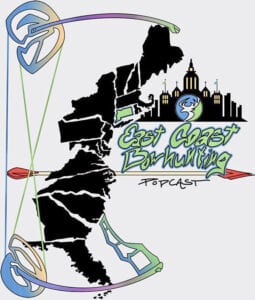
You’re more than welcome. We know plenty of spots out here, get ahold of your cousin and make it happen.
We’ll do that. Do you have any questions for me?
Before I have a question for you, what I was getting at is Trev is my playmaker. I always tell my role in the hunting industry, I’ve gained the name, the podfather. The main reason being is I always put my key players out in the field. I’m more like the coach. In my hunting group that I’m affiliated with, I’m typically one of the older gentlemen in the group with the youngest heart. I want my key players out there. I want them to succeed. I want them to be in the spotlight because I want to be known for the person that made it happen for them, not to take credit for it but be the recognition end of it.
The perfect analogy to put is at the end of the Super Bowl, who’s getting the bucket of ice thrown on them? That’s who I want to be, because the fame, that’s not for me. I want to see my friends and my family to succeed. That’s what makes me happy. Trev is my playmaker. Ryan, my other cohost, he’s another playmaker, the modern assassin out of Maryland. I got him hooked up with TAK Driver TV on the Pursuit Channel. I made that happen. Shout out to Nick Albanese out of New Jersey. We’re strong advocates of East Coast, strong advocates of Zeus Broadheads, they’re not our sponsor but we are loyal to East Coast.
You’ve got to be loyal to Nick. He had done so many great things in the industry.
He’s a genius. He’ll be on the podcast soon as well. He smacked a bear in Canada. My question to you though is what brought you to the podcast realm? What made you pursue that when you first started a few hundred episodes ago?
It’s pretty simple. I killed my first deer in 1966 on the same farm I hunt now. I started hunting whitetails and then I hunted all over North America. I’ve been blessed to be able to do that. In 2014, I came back from being gone for a month or so hunting whitetails. I had a buddy that was on Safari Club International local board named Bob Roark and he said, “You’re going to be a podcaster.” I go, “What?” He’s an entrepreneur who does a lot of different things and very successful gentleman. I go, “What’s a podcast?”
On March 15th I said, “I’ve got to have a website, a hosting company, editing, Adobe. I’ve got to have all this stuff,” because I did it all. He was there supporting me but that was it. He’s been my sponsor the whole time. I started and he made a deal with me, “In order to do this, basically to sponsor you, I want 100 podcasts in 100 days,” and I knew nothing but I did it. I got 100 podcasts in 100 days and launched on August 31st, 2015. I’m over 600 guests. We got 2,000 downloads or 50 or ten or none. You just don’t know.
The whole log you can see behind me, that’s the prettiest deer I ever shot. That’s why he’s up there. Young deer, six-inch, eight-inch brow tines. That’s why I shot him with a muzzleloader in Iowa. I’ve always been a whitetail hunter and I’ve hunted them in Canadian provinces. I haven’t killed a whitetail in New England yet. I grew up in Foster Center, Rhode Island. It’s the passion, meeting people like you and asking the questions, having conversations and then sharing the hunting tradition. That’s the genius behind podcasting, it’s because we get people out, they talk about it but then we share the snippets. If somebody listens to my podcast, your podcast, it doesn’t matter. They’re going to pick up these little nuggets and they’ll become a better deer hunter. If you’re a hunter and have a hunting community, then most times you’re a better person and you care about your community, you care about your family and you care about being a conservationist. I won’t even get into that part of my life but I’ve done a lot in the name of conservation. Throw all that in, why wouldn’t I do this?
Everything happens for a reason and I strongly believe in that. Unless you’re an atheist and you don’t believe in diddly-squat, everyone believes in something. You best believe that everything happens for a reason.
It does like us talking and connecting, I think of the hundreds and hundreds of people that I’ve connected with, I would never have had a conversation. It’s like sitting in your living room or office wherever you are and we’re hanging out talking about your career and what you’re doing, hunting deer and little this, little that. I’ve got some chills, I get Dan Infalt and I shut up and say, “Dan, how do you hunt swamp bucks?”
Stay tuned to that. I had a conversation with him. He might be popping on too.
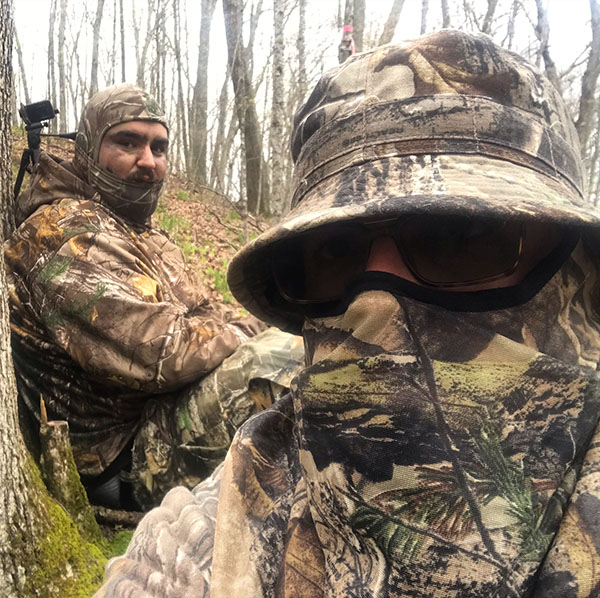
He’s an incredible guy and he’s a genius at whitetail hunting. We’ve done a three-part series and we talked about the cost of hunting. He wasn’t saying about the dollars you’re saying to your family because he was an absolute maniac when he was getting started. He told me one story. Once he told his wife he had to go back to the shop, he forgot something and went deer hunting.
He made a lot of sacrifices. He talks about that.
He’s one of my favorite guys. I do not know Steve Rinella. I’d love to have him on my show because he’s taken another level. I talked to Aron Snyder from Kifaru up in Colorado. He left for British Columbia hunting up there but he’s going to be on the show. You meet these guys like Aron Snyder, a traditional archer that travels and has built his whole life and his career around hunting.
There’s my buddy, Brian Broderick, shout out to him, Day Six Gear.
You think of these people and there are some luminaries and some A-listers but then there are some people that are basically on nobody’s radar and we love it.
That’s the best part about it. In the podcast realm, you get smacked in the face with the people you should be talking to. That’s why I do it. I had Jana Waller around from Skull Bound TV. That’s probably one of the biggest conservation supporters out there. That’s why she does it out in Montana and she’s killing it. I was able to help her out to push her message through podcasting. Quite honestly, if it weren’t for the podcast, would have I met her? Probably not and we had tons to talk about because of hunting and conservation.
Country hunters and anglers are going to be on. That’s what I mean. We serve a lot of purposes and that’s why I do it. I’d love to be on your show whenever you want to book me on.
I’m looking forward to that.
The stories never end.
Be ready though because we usually go for about an hour but our record hit was three hours and 24 minutes in one episode. We love to talk.
Dan and I did three shows but it was an hour and a half, half an hour per show.
I have to do another shout out because there’s nothing wrong with a celebratory drink after harvest or if you’re podcasting, we’re sponsored by Shebeen Brewing Company.
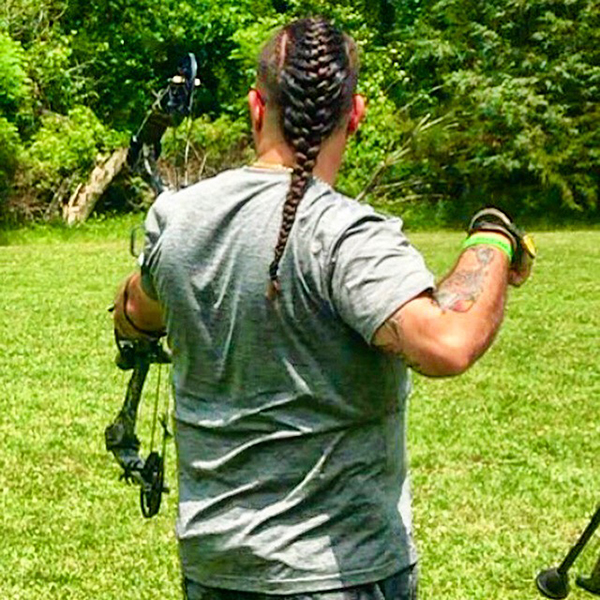
I love people like you because you’re who you say you are. I’ve got a friend, he got attacked by a grizzly bear a couple of years ago and lived. He’s got a book coming out called Wild Awakening. Greg Matthews was the guy’s name. He sent me the book and I read it. It’s about 250 pages, an easy read. How he survived what he survived, it’s a miracle.
At the same token, speaking about bear attacks and miracles, I encourage you to tune in to my latest episode with Sue Aikens because she talks about the very same thing as well. She’s no stranger to bears herself.
Thank you so much for being a guest on the show. This is not the last time that will happen.
I appreciate it, Bruce. Stay stepping, stay slaying.
Important Links:
- DRock Clarke
- EastCoast Bowhunting Podcast
- EastCoast Trev
- Working Class Bowhunter
- Sue Aikens – past episode of EastCoast Bowhunting Podcast
- Wild Edge Inc.
- Trev’s Euros
- The MeatEater Podcast
- Zeus Broadheads
- Dan Infalt – past episode
- Kifaru
- Day Six Gear
- Shebeen Brewing Company
- Jana Waller – past episode of EastCoast Bowhunting Podcast
- Wild Awakening
- https://www.iHeart.com/podcast/263-eastcoast-bowhunting-podca-30475948/episode/episode-29-working-class-bowhunter-30546123/
- https://Podcasts.Apple.com/us/podcast/eastcoast-bowhunting-podcast/id1435969654
- https://www.Facebook.com/eastcoastbowhuntingpodcast/
About DRock Clarke
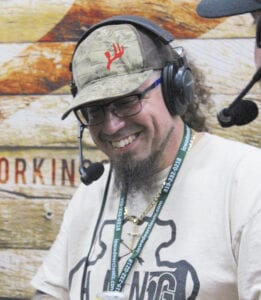 DRock: Host, Official Pope, and Young/Boone and Crockett measurer, Official East Coast Representative for WorkingClassBowhunter, Involved Conservationist bringing big names together for the Greater Good through Broadside Marketing. “The Outdoors is my Love, Hunting is my Passion, Podcasting is my Fetish.”
DRock: Host, Official Pope, and Young/Boone and Crockett measurer, Official East Coast Representative for WorkingClassBowhunter, Involved Conservationist bringing big names together for the Greater Good through Broadside Marketing. “The Outdoors is my Love, Hunting is my Passion, Podcasting is my Fetish.”
A man of passion to become a better hunter and learn something every day from his guests on East Coast Bowhunting.
